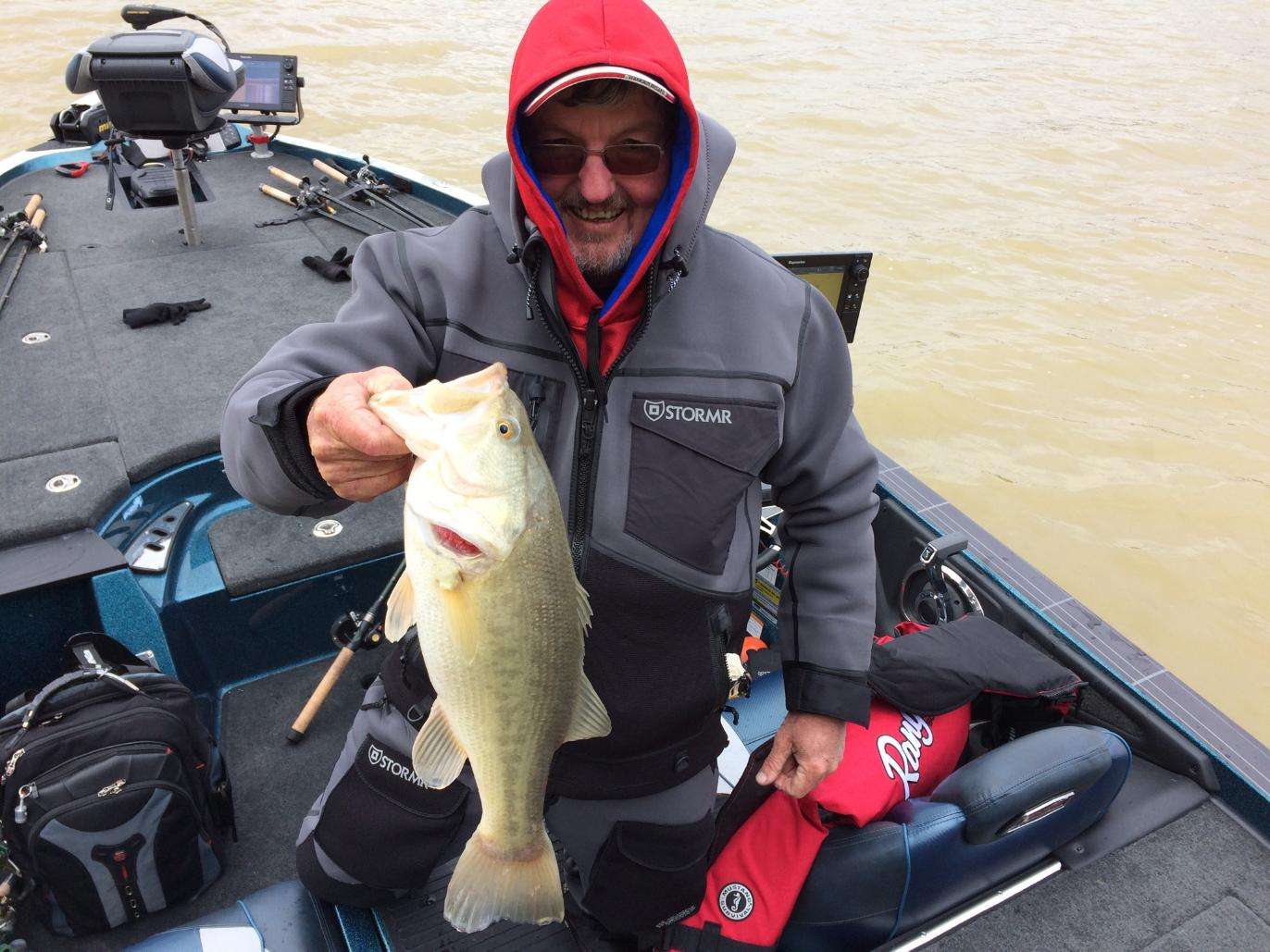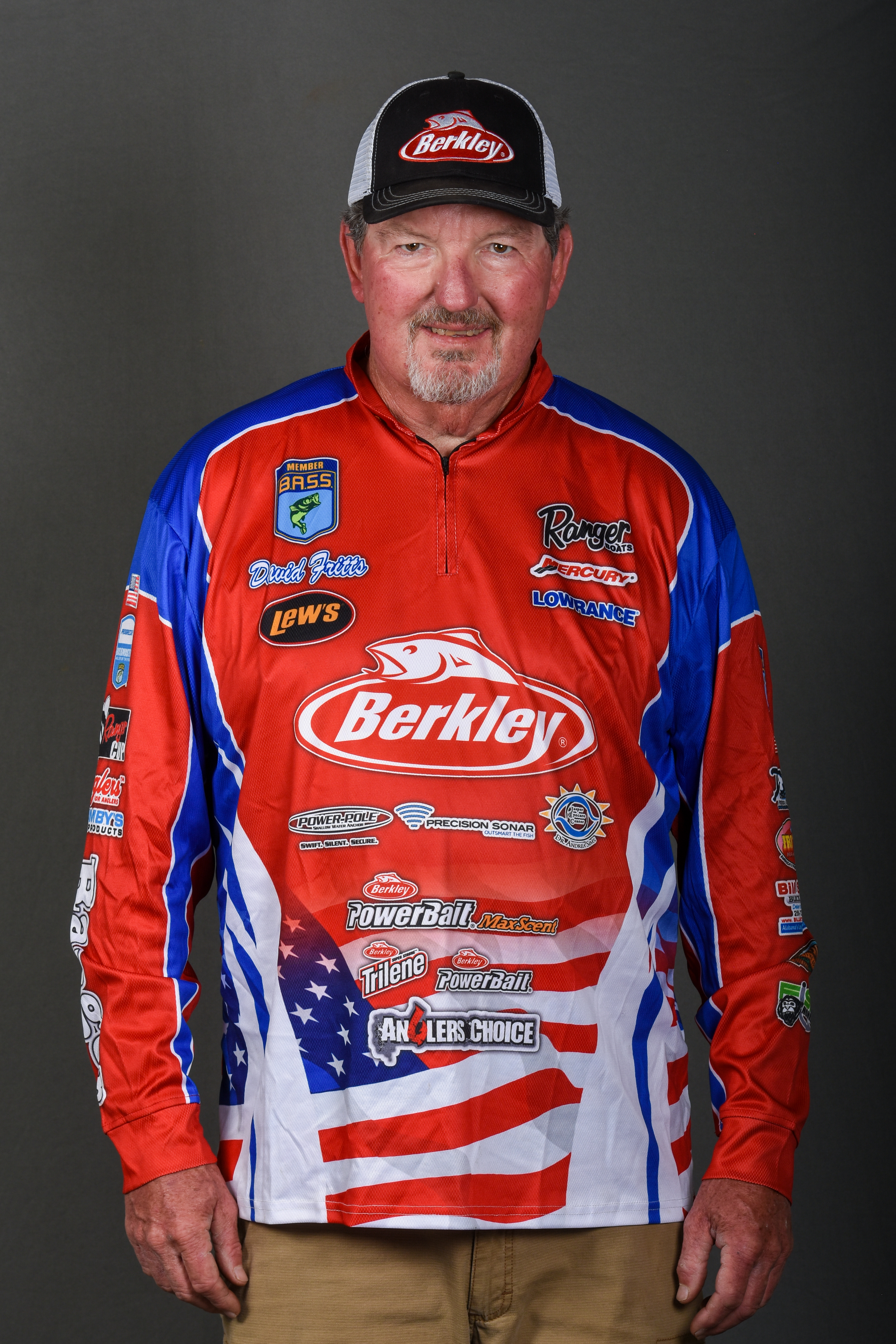
It’s finally getting cold. Water temperatures are dropping everywhere, but that doesn’t mean it’s time to put away your crankin’ stick. Some of my better crankbait catches have come when the water’s around 50 degrees, and I’ve caught them on crankbaits in water as cold as 41 degrees.
The trick is to throw the right bait, in the right color and retrieve it with the right technique. I’ll tell you what I do, and I’ll use Berkley products as examples. I’m not saying they’re the only crankbaits that’ll catch a bass when it’s cold, but I’m the most familiar with them so that’s what I’ll talk about.
Depending on where you’re at, and if the water’s clear, bass will frequently move up to take a bait when they won’t even look at it if it’s under them. That’s when I fish a swimming type of crankbait. My personal choice is a Berkley Bad Shad in their Number 5 or Number 7 size depending upon how deep the bass are holding.
They don’t always move up, though. Sometimes, when the water’s stained you need something that’ll hunt around and work a little deeper. That’s when I go to a lipless crankbait. My preference is a Berkley War Pig.
When it comes to color my favorite, all-around choice is Honey Shad. It has a kind of neutral, non-threatening look to it that’s perfect for winter conditions. When I’m fishing water that’s more stained and using a hunting-type lure like a lipless crankbait, I go more towards crayfish colors like brown and gold. If the water’s really stained, I like a chartreuse bait with a brown back. My favorite, though, is Honey Shad. It’ll catch ‘em.
Your lure and its color are important but the most important thing about cold water crankin’ is your retrieve. If it’s right, you can catch ‘em. If it’s wrong, you’ll never get a bite.
My best retrieve — the one I use almost all the time — is a pull and pause. I make my cast, wind it back eight or 10 turns to get it down and then pull my lure forward with my rod before I reel in the slack. Once I have the slack taken care of I do the same thing again. This’ll make your crankbait look like a dying shad.
You can control the depth of your lure by the position of your rod tip. When you’re fishing shallow and you want the lure to run shallow you can pull the rod tip straight up towards the sky. If you want your lure to run deeper, drop your rod tip down towards the water — either parallel to it or pointed down. The closer your rod tip is to the water the deeper your lure will run.
Regardless of how you position your rod tip it’s critical that your retrieve is slow. Nothing in cold water moves very fast. A swimming bait should swim. If it’s vibrating, you’re pulling it way too fast. The same thing is true about your lipless crankbait, although it takes some practice to learn how to swim one.
There’s always an exception, though. Every now and then a stop and go retrieve will catch ‘em. But that’s not very often. I don’t use it unless I’m really struggling. Pulling and reeling in the slack is the best.
You need to be ready at all times for a bite. They’re subtle and in some cases you won’t even know you’ve got one until you try to pull the lure forward. They just suck it in and swim along with it in their mouth.
Don’t be afraid of crankbaits in cold water. Bass will bite them if you fish it right. Take advantage of that.

